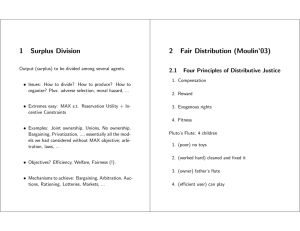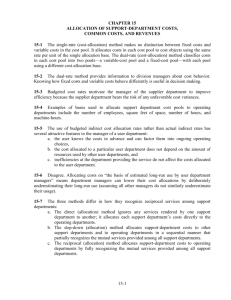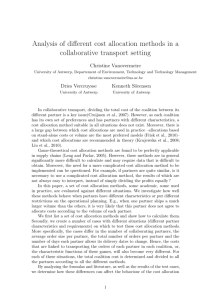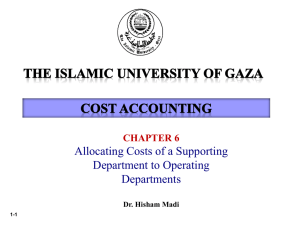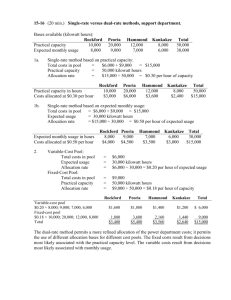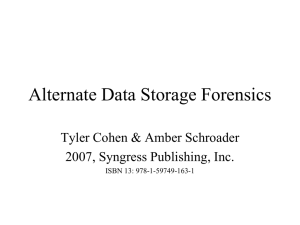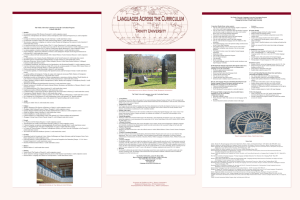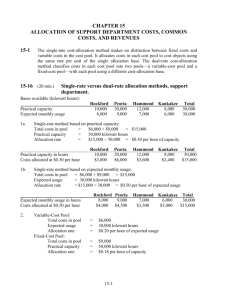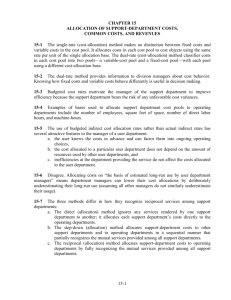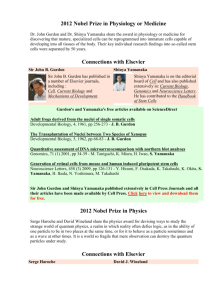Narrated PowerPoint
advertisement
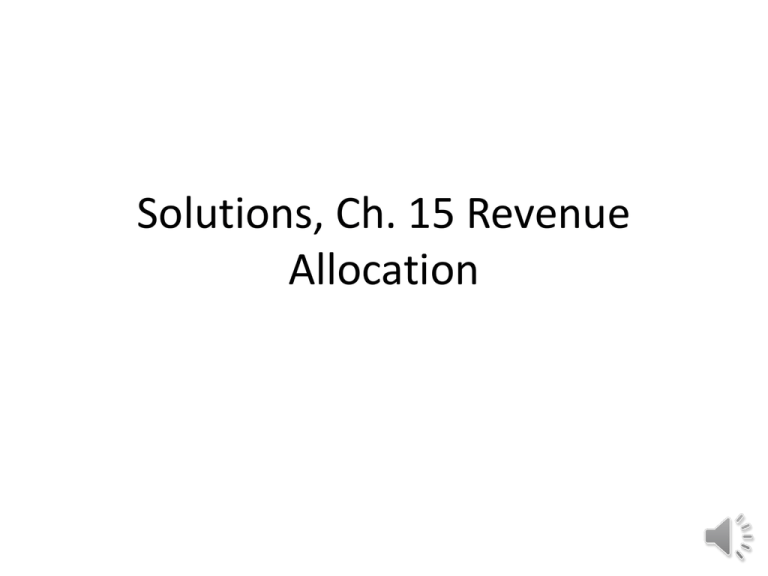
Solutions, Ch. 15 Revenue Allocation 15-28: Various Methods Shapley method • 1. c. Shapley method. (assuming each DVD is demanded in equal proportion) • i) BegM ($50 + $30) ÷ 2 = $40 • ii) RCC ($30 + $10) ÷ 2 = $20 15-28 cont’d: Different package 15-28 Shapley method again… 15-28 concluded • For each DVD package, the stand-alone method and the Shapley method give about the same allocation to each DVD. – These methods are fair if the demand for the DVDs are approximately equal. – The stand-alone method might be slightly preferable here since it is simpler and easier to explain. • The incremental method would be appropriate if one DVD has a higher level of demand – In this situation, the dominant DVD would be sold anyway so it should receive its stand-alone revenue, and the other DVD should receive the remainder. 15-33: Stand-alone revenue allocation 15-33 cont’d 15-33 cont’d 15-33 what is best? 15-33 concluding thoughts • The cost-based method might actually discourage cost efficiencies. – Increasing the cost per unit of product relative to other products would give the division a greater share of the overall revenue. • The physical unit allocation method makes no economic sense. – The relative price of $400 for each component is not representative of the amount individual price customers are willing to pay for each of the components independently. 15-35: Exclusive Resorts 15-35: Incremental 15-35: Incremental Pros & Cons The pros of the stand-alone method: • Each item in the bundle receives a positive weight – – – more likely to be accepted by all parties than a method allocating zero revenues to one or more products. It uses market-based evidence (unit selling prices) to decide the revenue allocations—unit prices are one indicator of benefits received . It is simple to implement. The cons of the stand-alone method: • It ignores the relative importance of the individual components in attracting consumers to purchase the bundle. • It ignores the opportunity cost of the individual components in the bundle. – • • The golf course operates at 100% capacity. Getaway participants must reserve a golf booking one week in advance, or else they are not guaranteed playing time. The weights can be artificially inflated by individual product managers setting “high” list unit prices and then being willing to frequently discount these prices. The use of actual unit prices or actual revenues per product in the stand-alone formula will reduce this problem. The weights may change frequently if unit prices are constantly changing. This is not so much a criticism as a reflection that the marketplace may be highly competitive. Pros & Cons The pros of the incremental method include: • It has the potential to reflect that some products in the bundle are more highly valued than others. – Not all products in the bundle have a similar “write-down” from unit list prices. – But requires that the choice of the primary product be guided by reliable evidence on consumer preferences. This is not an easy task. • Once the sequence is chosen, it is straightforward to implement. The cons of the incremental method include: • Obtaining the rankings can be highly contentious and place managers in a “no-win” acrimonious debate. • The revenue allocations can be sensitive to the chosen rankings. • Some products will have zero revenues assigned to them. Consider the Food division. It would incur the costs for the two dinners but receive no revenue. Subtlety p. 563—Incremental 15-35: Shapley method 15-35: Shapley method End of Ch. 15 Rev Allocation Solutions
